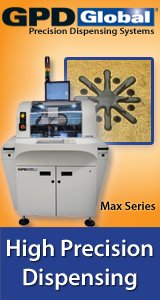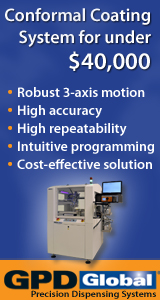Printed Circuit Board Assembly & PCB Design Forum
SMT electronics assembly manufacturing forum.
- SMTnet
- »
- Electronics Forum
- »
- YesTech F1 AOI false calls and misses
YesTech F1 AOI false calls and misses
Views: 6326
![]() Our company is having issues with our YesTech F1 AOI machine...
- Apr 02, 2012
by
vparis
Our company is having issues with our YesTech F1 AOI machine...
- Apr 02, 2012
by
vparis
![]()
![]()
![]() We currently have 2 M1 systems. Our false call rate has nev...
- Apr 04, 2012
by
Reese
We currently have 2 M1 systems. Our false call rate has nev...
- Apr 04, 2012
by
Reese
![]()
![]()
![]() Reese, Thank you so much for your reply.
...
- Apr 09, 2012
by
vparis
Reese, Thank you so much for your reply.
...
- Apr 09, 2012
by
vparis
![]()
![]()
![]() Hey Reese what is your Mis rate? Do you have any boards that...
- Apr 16, 2012
by
vparis
Hey Reese what is your Mis rate? Do you have any boards that...
- Apr 16, 2012
by
vparis
![]()
![]()
![]() That's hard to quantify. I deal with escapes when they occu...
- Apr 16, 2012
by
Reese
That's hard to quantify. I deal with escapes when they occu...
- Apr 16, 2012
by
Reese
![]()
![]()
![]() Reese, Thanks for your speedy reply.
Vic
...
- Apr 16, 2012
by
vparis
Reese, Thanks for your speedy reply.
Vic
...
- Apr 16, 2012
by
vparis
![]()
![]()
![]() some things to consider,
Is there flux on the board.
are...
- Apr 19, 2012
by
iddgmbj
some things to consider,
Is there flux on the board.
are...
- Apr 19, 2012
by
iddgmbj
![]()
![]()
![]() Programming is different, yes, but so is the terminology.
...
- Apr 20, 2012
by
Reese
Programming is different, yes, but so is the terminology.
...
- Apr 20, 2012
by
Reese
![]()
- SMTnet
- »
- Electronics Forum
- »
- YesTech F1 AOI false calls and misses







